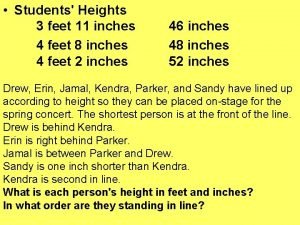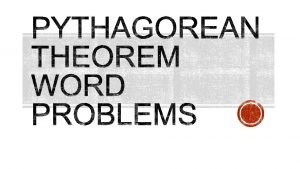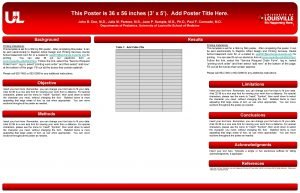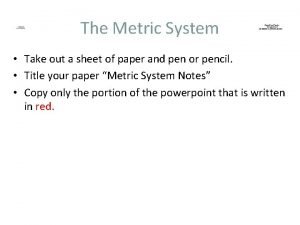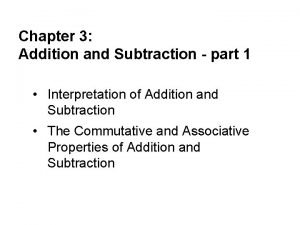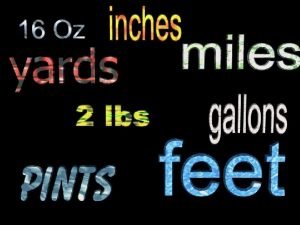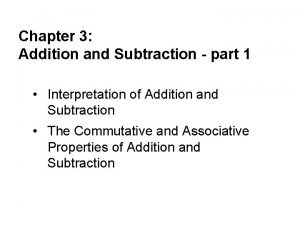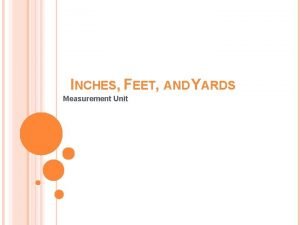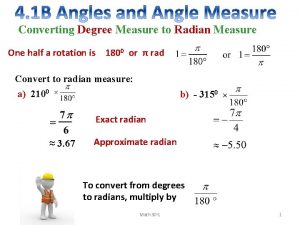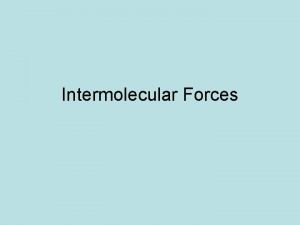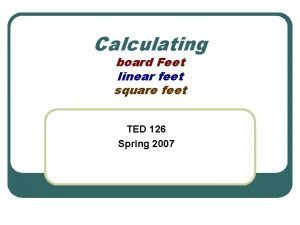Units of Measurement SI Units Inches feet degrees











- Slides: 11

Units of Measurement

SI Units • Inches, feet, degrees Fahrenheit, and cups are NOT units used in science • There was a need to report data that could be used and reproduced easily by others – Developed in 1795 – Systeme Internationale d’Unites • By using one system of units, scientists can quickly interpret the results of one another

Base Units • A defined unit in a system of measurements that is based on an object or event in the physical world

Base Units Quantity Unit Symbol Length meter m Mass kilogram kg Temperature kelvin K Time second s Amount of Substance Electric Current Luminous Intensity mole mol ampere A candela cd

Derived Units • Are a combination of base units • Example: – The unit for Volume is cubic meters (m 3) is a derived unit – You can calculate volume by multiplying length x width x height or m x m which equals m 3

Quantity Unit Symbol Area Volume Liquid volume square meter cubic decimeter m 2 m 3 dm 3 = L Density kg/m 3 Pressure kilograms per cubic meter pascal (kg/m*s 2) Energy Joule (kg*m 2/s 2) J Frequency Electric Charge hertz (1/s) coulomb (A*s) Hz C Speed meters per second m/s Pa

Large Metric Prefix Small

Conversion Factors • Is a ratio of equivalent measurements that is used to convert a quantity expressed in one unit to another unit

Dimensional Analysis • A method of analysis used when there is not enough information to set up precise equations • The unit factors are conversion factors – Example: any two terms that describe the same or equivalent “amounts” of what we are interested in – Ex: 1 inch = 2. 54 centimeters – 1 meter = 100 centimeters

• 10 megawatts is equal to how many watts? • 10 MW x 1, 000 W = 10, 000 W 1 1 MW • 20, 000 milligrams is equivalent to how many grams? • 20, 000 mg x 1 1 g = 20 g 1, 000 mg • Convert the height of Mount Everest (8, 848 m) into kilometers • 8, 848 m x 1 1 km = 8. 848 km or 8. 8 km 1, 000 m

Precision & Accuracy • Precision is a gauge of how exact a measurement is – The more significant figures there are, the more precise the measurement – 5. 2 meters vs 5. 2345867 meters • Accuracy is the closeness of a measurement to the actual value of what is being measured – Actual value is 20 cm, are the following measurements accurate? • Measurement 1 = 19. 5 cm • Measurement 2 = 10 cm • Measurement 3 = 21 cm
 46 inches in feet and inches
46 inches in feet and inches A suitcase measures 24 inches long and 18 inches high
A suitcase measures 24 inches long and 18 inches high 56 inches in feet
56 inches in feet 56 inches in feet
56 inches in feet Using proportional relationships
Using proportional relationships Metric mania lesson 2 mass
Metric mania lesson 2 mass Allie solves the subtraction problem 304-9 as follows
Allie solves the subtraction problem 304-9 as follows What is 46 inches in feet
What is 46 inches in feet T madas
T madas Parts of a subtraction equation
Parts of a subtraction equation What is 7/8 of a yard in inches
What is 7/8 of a yard in inches One half radian
One half radian
